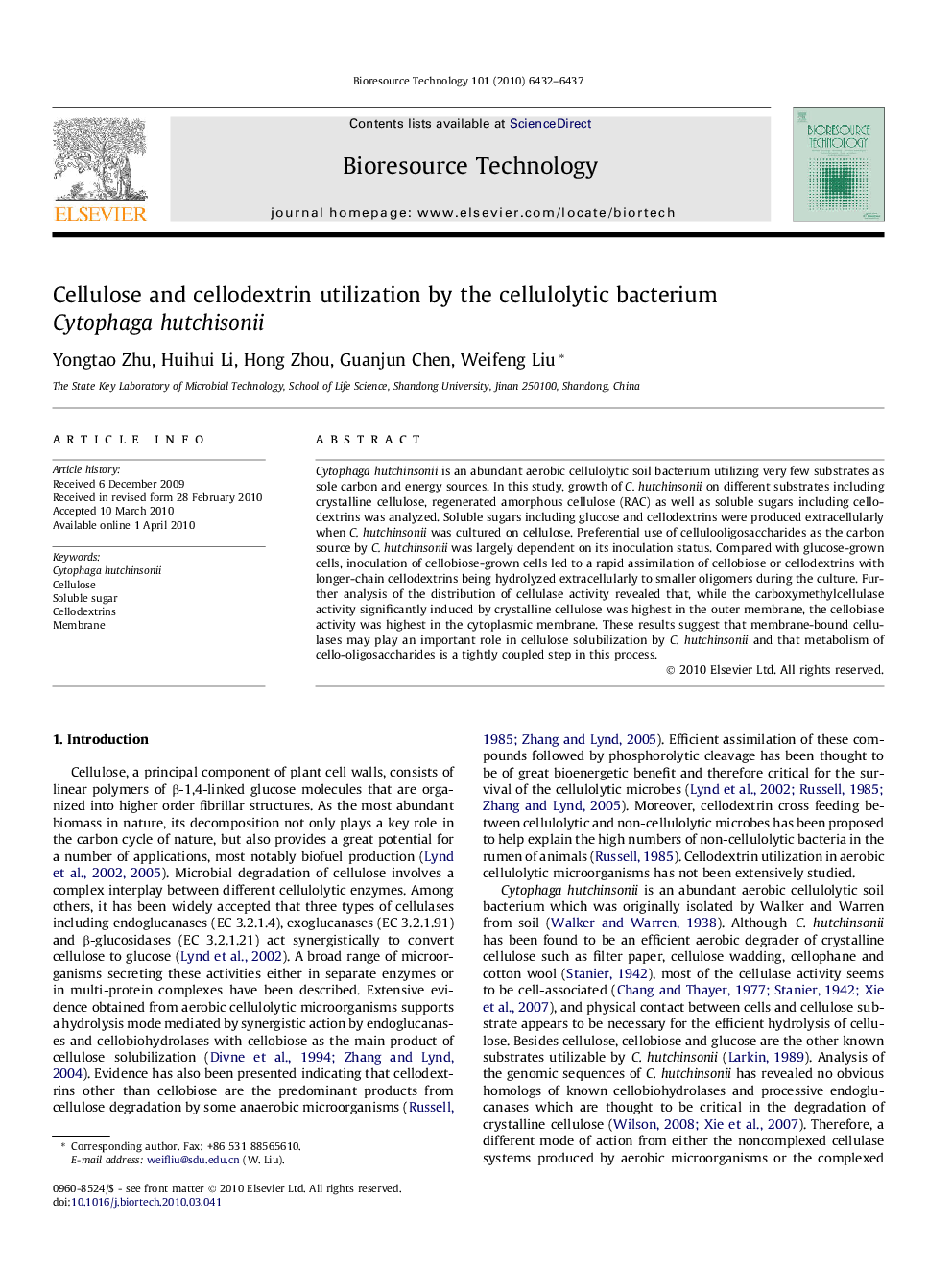| Article ID | Journal | Published Year | Pages | File Type |
|---|---|---|---|---|
| 683214 | Bioresource Technology | 2010 | 6 Pages |
Cytophaga hutchinsonii is an abundant aerobic cellulolytic soil bacterium utilizing very few substrates as sole carbon and energy sources. In this study, growth of C. hutchinsonii on different substrates including crystalline cellulose, regenerated amorphous cellulose (RAC) as well as soluble sugars including cellodextrins was analyzed. Soluble sugars including glucose and cellodextrins were produced extracellularly when C. hutchinsonii was cultured on cellulose. Preferential use of cellulooligosaccharides as the carbon source by C. hutchinsonii was largely dependent on its inoculation status. Compared with glucose-grown cells, inoculation of cellobiose-grown cells led to a rapid assimilation of cellobiose or cellodextrins with longer-chain cellodextrins being hydrolyzed extracellularly to smaller oligomers during the culture. Further analysis of the distribution of cellulase activity revealed that, while the carboxymethylcellulase activity significantly induced by crystalline cellulose was highest in the outer membrane, the cellobiase activity was highest in the cytoplasmic membrane. These results suggest that membrane-bound cellulases may play an important role in cellulose solubilization by C. hutchinsonii and that metabolism of cello-oligosaccharides is a tightly coupled step in this process.
